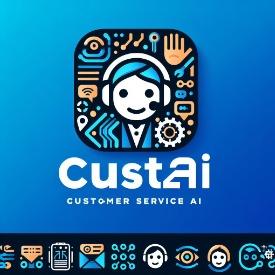Cust2merAi
One stop solution for all your customer care service needs with multiple channels support
Created on 25th February 2024
•
Cust2merAi
One stop solution for all your customer care service needs with multiple channels support
The problem Cust2merAi solves
Problem Solving:
Efficiency in Call Handling: GenAI automates routine tasks in call handling, such as gathering essential details and categorizing issues, reducing the workload on human agents and increasing overall efficiency.
Quick Response to Customer Inquiries: By swiftly categorizing and prioritizing customer issues, GenAI ensures that urgent matters are addressed promptly, leading to reduced wait times and improved customer satisfaction.
Smart Prioritization of Tasks: With dynamic priority assignment, GenAI intelligently prioritizes incoming calls based on urgency, ensuring that critical issues are handled with the highest priority.
How it Makes Existing Tasks Easier:
Automated Call Processing: GenAI automates the initial stages of call processing, such as gathering essential details and analyzing call content, making it easier for human agents to focus on resolving complex issues.
Enhanced Customer Experience: By providing quick responses and prioritizing urgent matters, GenAI improves the overall customer experience, leading to higher satisfaction and retention rates.
Real-Time Insights: The dashboard powered by GenAI provides startups with real-time insights into customer issues, empowering them to address high-priority concerns promptly and effectively.
Safety and Security:
Accurate Data Handling: GenAI ensures the accurate categorization and storage of call data, minimizing the risk of errors or data breaches during the call handling process.
Compliance with Regulations: By automating call processing and data handling tasks, GenAI helps ensure compliance with relevant regulations and standards, reducing the risk of regulatory fines or penalties.
Overall Impact:
Streamlined Customer Support Processes: GenAI optimizes customer support processes, ensuring a smooth and responsive experience for both customers and support agents.
Challenges we ran into
Certainly! Here are some challenges we encountered while building the GenAI Call Handling project and how we overcame them:
Handling Call Variability:
- Challenge: One of the main challenges we faced was handling the variability in call content, including different accents, languages, and speech patterns, which could affect the accuracy of transcription and NLP analysis.
- Solution: To overcome this challenge, we employed robust speech-to-text and NLP models that were trained on diverse datasets to handle a wide range of linguistic variations. Additionally, we continuously fine-tuned our models using feedback from real-world call data to improve accuracy over time.
Scalability and Performance:
- Challenge: As the volume of incoming calls increased, we encountered performance issues and scalability challenges with our system, particularly in processing and analyzing large volumes of call data in real-time.
- Solution: To address this challenge, we optimized our system architecture and implemented distributed computing techniques to improve scalability and performance. We also leveraged cloud-based resources to dynamically scale our infrastructure based on demand, ensuring that our system could handle high call volumes efficiently.
Integration and Compatibility:
- Challenge: Integrating our solution with existing telephony systems and third-party APIs posed compatibility issues and required careful coordination to ensure seamless data exchange and functionality.
- Solution: We conducted thorough compatibility testing and worked closely with telephony providers and API vendors to address any compatibility issues. We also developed robust error-handling mechanisms and fallback options to mitigate the impact of integration issues during deployment.
Data Privacy and Security:
- Challenge: Ensuring the privacy and security of sensitive customer data, particularly during call recording, transcription, and storage, presented si
